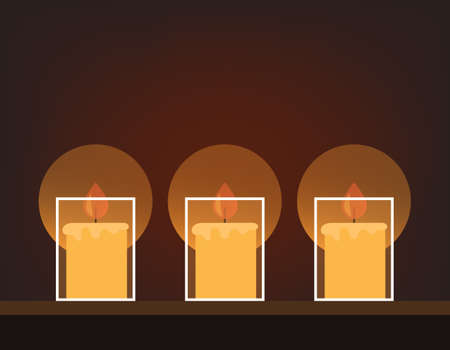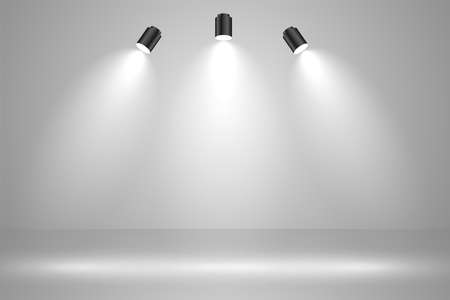The Importance of Energy Efficiency in Modern Lighting
In today’s American homes, energy efficiency has become a top priority, especially when it comes to lighting choices like chandeliers and pendant lights. Modern families are increasingly aware of the benefits that efficient lighting brings—both financially and environmentally. By selecting energy-efficient fixtures and bulbs, homeowners can significantly reduce monthly utility bills. This translates into real cost savings over time, making energy-conscious decisions not just good for the planet, but also for your wallet.
Beyond the immediate financial incentives, energy-efficient lighting plays a crucial role in reducing environmental impact. Traditional lighting sources consume more power and contribute to higher greenhouse gas emissions, while advanced options such as LED bulbs use a fraction of the energy and last much longer. This shift supports sustainability goals by lowering overall household energy consumption and decreasing the demand on power plants.
Another important factor is compliance with evolving U.S. energy standards and regulations. The Department of Energy (DOE) and ENERGY STAR® programs set strict criteria for lighting products sold in the United States, encouraging consumers to adopt best practices in their homes. By choosing compliant chandeliers and pendant lights, you not only ensure your home meets current codes, but you also future-proof your investment as standards continue to evolve. In summary, prioritizing energy efficiency in your lighting design is a smart move that benefits your budget, the environment, and keeps your home up-to-date with national standards.
2. Understanding Chandeliers and Pendant Lights
Chandeliers and pendant lights are popular choices for both residential and commercial interiors across the United States, each serving unique design and functional purposes. To make informed decisions about energy efficiency, it’s important to understand the distinctions between these two fixture types, their common applications in American spaces, and the specific energy considerations they present.
Defining Chandeliers and Pendant Lights
| Feature | Chandeliers | Pendant Lights |
|---|---|---|
| Description | Multi-arm fixtures, often with multiple bulbs arranged on branched arms; usually decorative and central in a room. | Single light source suspended from the ceiling, sometimes used in multiples; typically simpler in design. |
| Typical Placement | Dining rooms, entryways, living rooms, ballrooms | Kitchens (over islands), dining areas, hallways, bedrooms |
Applications in American Interiors
In U.S. homes, chandeliers are often used as statement pieces that define the visual center of a space. They are especially popular above dining tables or in grand foyers where both style and illumination matter. Pendant lights, on the other hand, offer versatility and can be installed individually or in groups over kitchen islands, counters, or even bedside tables. Their focused lighting makes them ideal for task-oriented spaces while still contributing to the overall ambiance.
Unique Energy Considerations
The energy demands of chandeliers and pendant lights can differ significantly due to their design and use cases:
| Fixture Type | Typical Number of Bulbs | Wattage Range (Traditional) | Common Energy Challenges |
|---|---|---|---|
| Chandeliers | 5-20+ | 200-1200W total | High cumulative wattage; harder to retrofit; often left on for long periods for ambiance. |
| Pendant Lights | 1-3 per fixture | 40-180W per fixture | Easier to upgrade; more frequent switching on/off; can be tailored to specific zones. |
Key Takeaway
Selecting the right type of fixture—while considering its location, function, and duration of use—is essential for maximizing energy efficiency. Both chandeliers and pendant lights benefit greatly from modern LED technology, which can dramatically reduce energy consumption without sacrificing style or light quality.

3. LED Lighting Technology: How It Works and Its Benefits
LED (Light Emitting Diode) technology has revolutionized the way we light our homes, especially when it comes to decorative fixtures like chandeliers and pendant lights. At its core, an LED is a semiconductor device that emits light when electrical current passes through it. Unlike traditional incandescent bulbs, which generate light by heating a filament, LEDs produce illumination through an electroluminescent process, making them significantly more energy efficient.
One of the standout benefits of LED lighting is its remarkable longevity. While typical incandescent bulbs may last around 1,000 hours and compact fluorescents up to 10,000 hours, quality LED bulbs can shine for 25,000 hours or more. This durability means fewer replacements and less hassle—an especially valuable advantage in hard-to-reach fixtures such as high ceiling chandeliers or multi-tier pendant lights.
Energy efficiency is another major advantage. LEDs consume up to 80% less energy than traditional incandescent bulbs, translating into significant savings on your utility bills over time. For American households striving to lower their carbon footprint and meet Energy Star recommendations, upgrading to LED options in decorative lighting is a practical step toward sustainability without sacrificing style or brightness.
Additionally, modern LED technology offers excellent versatility for use in decorative fixtures. LEDs are now available in a range of color temperatures—from warm white that mimics classic incandescent glow to cool daylight—allowing you to customize the ambiance of any space. They are also compatible with dimmer switches and smart home systems, providing greater control over lighting effects and energy usage.
In summary, integrating LED technology into chandeliers and pendant lights not only supports better energy efficiency but also enhances the functionality and aesthetics of your living spaces. With their superior lifespan, reduced energy consumption, and adaptability for various decorative applications, LEDs represent the best practice choice for modern American homes.
4. Best Practices for Maximizing Energy Efficiency
Selecting the Right Bulbs
Choosing energy-efficient bulbs is a key step in reducing power consumption without compromising style or illumination quality. For chandeliers and pendant lights, LED bulbs are the top choice due to their longevity and low wattage requirements. When selecting LED bulbs, look for those labeled with ENERGY STAR certification, as these meet strict efficiency guidelines set by the U.S. Environmental Protection Agency. Consider color temperature (measured in Kelvin) to match your desired ambiance—warmer tones (2700K–3000K) work well in living rooms and dining areas, while cooler tones (3500K–4000K) suit kitchens and workspaces.
Utilizing Dimmers and Smart Controls
Installing dimmer switches can significantly optimize energy use by allowing you to adjust light levels based on activity and time of day. Modern dimmers are compatible with most LED bulbs—just make sure to select “dimmable” LEDs. Additionally, smart lighting systems offer automated scheduling and remote control via smartphone apps, which helps prevent unnecessary usage and tailors lighting to your lifestyle.
Optimal Fixture Placement
Strategic placement of chandeliers and pendant lights maximizes both visual impact and energy efficiency. Position fixtures so that light is distributed evenly across a room, minimizing dark corners that may require supplemental lighting. In open floor plans or larger spaces, consider layering lighting by combining central fixtures with wall sconces or recessed lights; this allows targeted illumination while keeping overall wattage low.
Quick Reference Table: Energy-Efficient Lighting Tips
| Action | Recommendation | Benefit |
|---|---|---|
| Select Bulbs | Use ENERGY STAR certified LEDs (dimmable) | Lower energy use & longer lifespan |
| Add Dimmers/Smart Controls | Install compatible dimmer switches or smart systems | Adjusts brightness & prevents waste |
| Optimize Placement | Evenly distribute fixtures; layer with task lights if needed | Reduces need for excess lighting |
| Regular Maintenance | Keep fixtures clean & replace inefficient bulbs promptly | Keeps output high & costs low |
Pro Tip:
In residential settings, always check fixture manufacturer recommendations before retrofitting with LEDs or installing dimmers to ensure compatibility and maintain warranty coverage.
5. Choosing the Right LED Options for Your Space
Selecting the ideal LED lighting for chandeliers and pendant lights is crucial to achieving both energy efficiency and a visually appealing atmosphere in your home. Homeowners in the U.S. have a wide range of options, but making informed choices about color temperature, brightness, and fixture style can help you match current American design trends while reflecting your personal taste.
LED Color Temperature: Setting the Mood
Color temperature, measured in Kelvins (K), determines whether light appears warm or cool. For most residential spaces, warm white LEDs (2700K–3000K) create a cozy and inviting vibe, making them popular in living rooms, bedrooms, and dining areas. Cooler temperatures (3500K–4000K) are better suited for kitchens or workspaces where clarity and focus are essential. Matching the color temperature to the room’s function ensures comfort while supporting modern U.S. interior aesthetics.
Brightness Levels: Finding the Sweet Spot
Brightness is measured in lumens, not watts. For chandeliers and pendant lights, consider how much ambient light the room needs and the fixture’s placement. A dining room chandelier might require 400–800 lumens per bulb to provide ample illumination without being overpowering. Adjustable dimmable LEDs offer flexibility—allowing you to set the mood for entertaining or relaxing with just a touch.
Fixture Style: Blending Trends with Personality
U.S. homeowners often look for lighting that aligns with current design trends such as modern farmhouse, industrial chic, or mid-century modern. Fortunately, LEDs come in diverse shapes—from classic candelabra bulbs to sleek globe styles—making it easy to find an option that complements your fixtures and décor. Pay attention to bulb finish (clear vs. frosted) and size for seamless integration into your chosen style.
Smart LEDs: The Ultimate Personalization
For tech-savvy households, smart LED bulbs provide customizable color temperatures and brightness via smartphone apps or voice assistants. These options enhance convenience while future-proofing your home against evolving lighting needs.
Expert Tip
Always check compatibility between your chandelier or pendant light fixture and your selected LED bulbs—especially if you plan to use dimmers or smart controls—to ensure optimal performance and longevity.
6. Incentives and Rebates for Energy-Efficient Lighting
Homeowners and businesses looking to upgrade chandeliers and pendant lights to more energy-efficient solutions, such as LEDs, can take advantage of a variety of incentives and rebates available throughout the United States. These programs are designed to encourage the adoption of efficient lighting and help offset initial costs.
Federal Programs
The federal government supports energy efficiency through initiatives managed by agencies like the U.S. Department of Energy (DOE) and ENERGY STAR®. While direct rebates for lighting upgrades are uncommon at the federal level, choosing ENERGY STAR® certified LED bulbs and fixtures may qualify you for other broader home or business improvement tax credits related to energy efficiency. Always check current eligibility requirements on official government websites before making purchases.
State and Local Incentives
Many states offer their own rebate programs for upgrading to energy-efficient lighting in residential and commercial spaces. For example, Californias Energy Upgrade California program and New Yorks NYSERDA provide rebates or instant discounts when purchasing qualifying LED chandeliers or pendant lights. State energy offices typically list available programs on their websites, so it’s worth exploring what’s offered locally before starting your project.
Utility Company Rebates
Utility providers across the U.S., including Duke Energy, Pacific Gas & Electric (PG&E), and Con Edison, frequently run incentive programs for customers who install energy-saving lighting products. These incentives often include instant in-store discounts, mail-in rebates, or bill credits for switching to ENERGY STAR® rated LEDs in decorative fixtures like chandeliers and pendants. Some utilities even offer free energy audits to help identify further savings opportunities within your home or business.
How to Access Incentives
The process typically involves:
- Checking your utility provider’s website for current lighting rebate offers
- Purchasing eligible products—usually ENERGY STAR® certified fixtures or bulbs
- Submitting proof of purchase or installation if required
Why Take Advantage?
Leveraging these incentives not only reduces upfront costs but also leads to long-term savings on your electricity bills. By upgrading chandeliers and pendant lights with high-efficiency LEDs, you’ll enjoy better performance, lower maintenance needs, and support sustainability efforts—all while benefiting from financial rewards designed to make energy efficiency more accessible.


